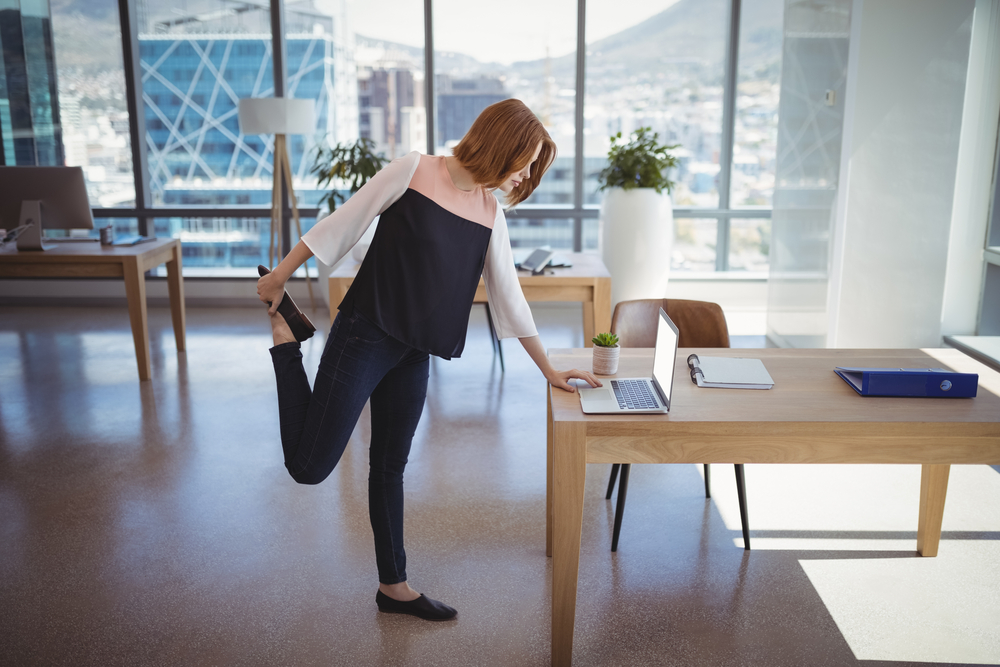
From the daily commute to work, sitting in an office chair, to relaxing at home, the average American sits for upwards of 9-10 hours per day.
Not only does this habit wreak havoc on the spine and back muscles, but it is also linked to poor cardiovascular outcomes. According to an article by Harvard Health Publishing, a sedentary lifestyle leads to a heightened risk of heart disease, stroke, and even diabetes. Thankfully, exercise and prioritizing movement can help reduce the impact of a sedentary job.
Develop a Daily Exercise Routine
A daily exercise regimen does not have to consist of an hour spent in the gym each day.
Gym memberships can be costly, and the commute to and from the gym may cut into valuable time. It may be useful to invest in discounted home gym equipment so you can squeeze a quick workout in from the comfort of your own space.
When short on time, high-intensity interval training (or HIIT) workouts can be done in under fifteen minutes and can be equally beneficial for heart health as a slower, less intense workout. Regardless, it is worth the time to commit to even short bursts of exercise; even 1-2 minute bursts of exercise were associated with better health.
It can be difficult to stay motivated when developing a daily exercise routine. Exercise does not need to be overly strenuous to bring in the incredible benefits like improved heart health, lowered risk of depression and anxiety, and weight loss. Be sure to ease into an exercise routine and practice goal-setting to stay on track. You may find that using a daily exercise journal is helpful.
Perform Exercises At Your Desk
If you do not have time to carve out of your day for a one-hour exercise session, simply make time to get up and move from a seated position at least once per hour. The cardiovascular benefits you need can be accomplished by simple movements, like choosing to park further away from your destination, opting to take the stairs, or performing exercises that require no equipment and can be done in your office space.
When you begin to feel lethargic at your desk, it may be tempting to reach for caffeinated beverages. Instead, getting up to do bodyweight exercises will increase your heart rate and improve your focus.
When it comes to exercising in your office, simplicity is key. Start with 30-second rounds of bodyweight squats, lunges, marching in place, and jumping jacks. Be sure to make any modifications your body may need as these exercises should not be causing any pain.
Perfect Your Posture
Many adults who have been in the working world suffer from chronic pain due to years of poor posture. It is common for working adults to hold tension in their neck, back, and shoulders while working. To better address the effects of long periods of sitting, be mindful of posture and perform posture-correcting moves to loosen muscles.
During a busy day at work, it can be difficult to become aware that your body is holding tension until after you begin to feel the negative effects. Throughout the workday, take a moment to notice where your body holds tension and work to actively release it. You will be surprised at how often you find yourself hunching your shoulders, slouching, or straining your neck.
Adjust Your Office Space
There are many ways to adjust your office environment to promote health and encourage exercise. For example, sit-to-stand desks will temporarily relieve pressure from the spine that occurs from chronic periods of sitting. Owning a sit-to-stand desk also allows you to do different exercises whilst working, such as marching in place, performing body-weight squats, lunges, or other stretches.
Another possibility is replacing your desk chair with a stability ball. While it may not appear to make much of a difference, a stability ball will subtly engage your core muscles throughout the day. If your office does not allow these replacements, be sure to check that your workstation is ergonomically correct in order to relieve pressure on the shoulders and neck.
There are small adjustments that can be made that will allow for increased steps and movement in the office environment. Be sure to take the stairs whenever possible, walk to your colleague’s office instead of sending an email, use a bathroom on a different floor, and take a walking break during your lunch. Wearing a pedometer will help you track your progress and ensure you are staying active throughout the day.
Written by Kevin Jones
About the Author
Kevin Jones writes for a number of sites across the web sharing his wisdom and expertise in the health and fitness industry. He writes extensively for fitness sites offering out of the box workout plans and nutritional advice. Follow him on Twitter.
You may also like
Tips to Boost Your De-Stressing Efforts at Post Office Hours
Desk Organization Ideas That Will Boost Your Productivity
